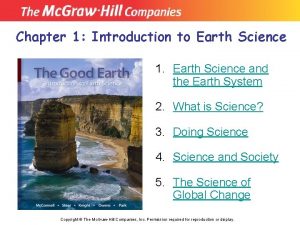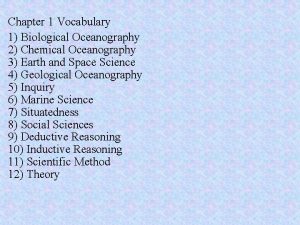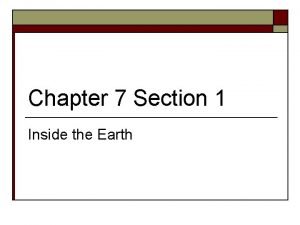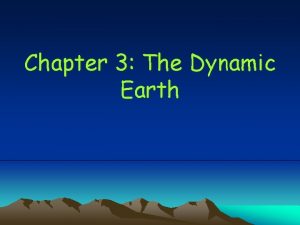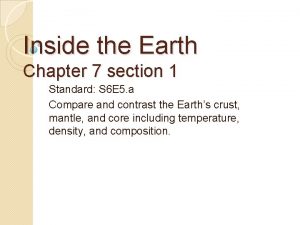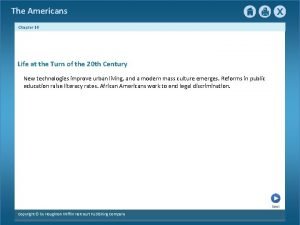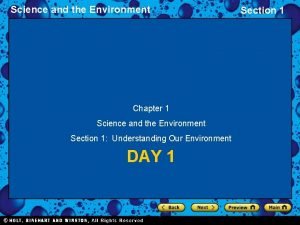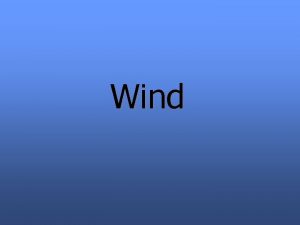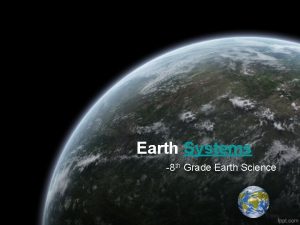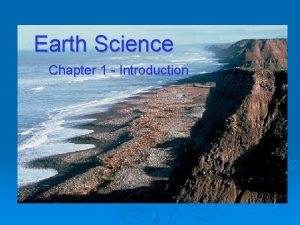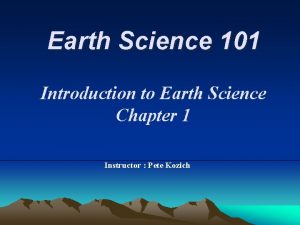Wind Earth Science Chapter 8 Section 2 Wind









- Slides: 9

Wind Earth Science Chapter 8 Section 2

Wind Erosion and Transport A current of rapidly moving air can pick up and carry sediments Can only carry small particles Powerful agent of erosion Particles move in different ways Rolling motion along the ground Suspension- carried in the air for a distance Saltation- larger particles bounce along the ground Limited precipitation leads to more wind erosion Precipitation allows plants to grow The plants keep the particles in place with their roots

Deflation Lowering of land surface Wind blows particles away Dust Bowl caused by poor farming practices removed vegetation that held particles in place Results in severe dust storms

Deflation Blowout Shallow depressions where sediment has been blown away by wind Vary in size from a few meters to hundreds of meters in diameter Found in areas with sandy soil Major problem in agricultural areas

Abrasion Particles of sand rub against the surface of rocks or other material Occurs in Wind Streams Glaciers Wind abrasion – particles are picked up and are blown against anything in its path

Abrasion Structures can be damaged by wind abrasion Powerful erosional agent Rocks can be pitted or grooved Rocks can be polished Erosion patterns determined by direction and force of the winds Ventifacts- Rocks shaped by windblown sediments Ventifact

Wind Deposition Dunes Sand particles that accumulate where an object blocks the forward motion of the wind Pile of windblown sand is called a dune Windward side- gentle slope Leeward side- steep slope Conditions that affect dune formation Type and availability of sand Amount of vegetation present Wind direction and velocity Windward side Leeward side

Types of Dunes

Loess Wind carries fine particles, such as silt, for long distances Thick windblown silt deposits Source of silt deposits might have been glacial melting during ice age Some of the most fertile soils Contain abundant minerals and nutrients
 What is your favourite subject in college and why
What is your favourite subject in college and why Chapter 1 introduction to earth science
Chapter 1 introduction to earth science Earth science chapter 1 vocabulary
Earth science chapter 1 vocabulary Chapter 7 section 1 inside the earth answer key
Chapter 7 section 1 inside the earth answer key Chapter 7 section 1 inside the earth answer key
Chapter 7 section 1 inside the earth answer key Chapter 3 the dynamic earth section 1 the geosphere
Chapter 3 the dynamic earth section 1 the geosphere Composition of the earth's crust
Composition of the earth's crust Kurshalter
Kurshalter Chapter 16 section 1 science and urban life
Chapter 16 section 1 science and urban life Chapter 1 science and the environment section 2
Chapter 1 science and the environment section 2

